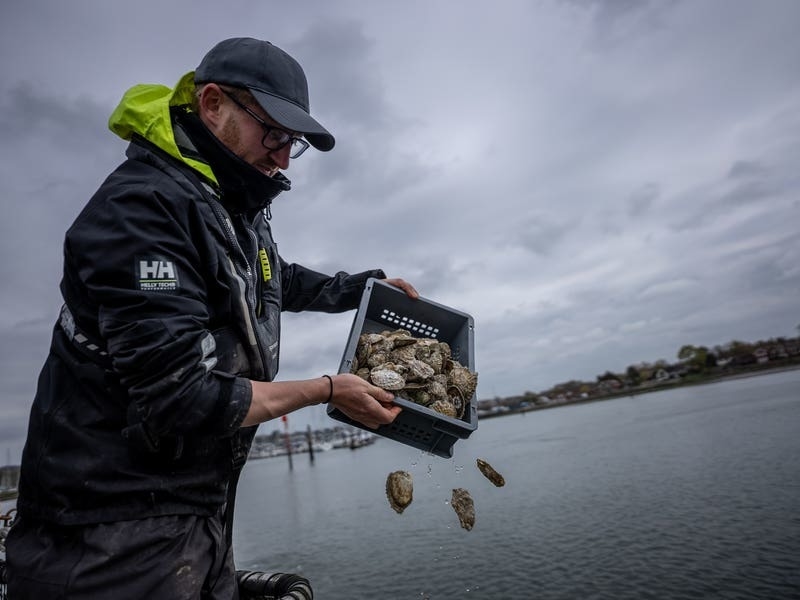Nearly 15,000 oysters have been sprinkled on a newly-created oyster bed as part of a project to reintroduce the native species to the Solent region.
The oysters have been transferred from South Wales to seed in the new habitat created in the Swanwick bend of the river Hamble in Hampshire.

The multimillion-pound initiative is part of the Solent Seascape Project – a five-year scheme to reverse the loss of the oyster fishery industry in the Solent area which was once the largest in Europe.
But the number of oysters has massively declined in the past decade caused by poor water quality, competition from invasive species, disease and overfishing.
Now a total of 14,939 oysters have been dropped on to the reef from a fishing boat, with the aim to place a total of 30,000 by the completion of the project.
Louise MacCallum, project manager for conservation charity Blue Marine Foundation, told the PA news agency: “The Solent used to be the most important oyster fishery in Europe, but because of a combination of factors they have become very rare.
“The exact reasons probably include disease and poor water quality. We hope to see a good survival rate but those factors could come into play so this is a very pioneering project and we will be working with the University of Portsmouth to monitor growth rates as we go forward.”
She added: “Oysters are amazing creatures, they are amazing ecosystem engineers, an adult oyster can filter up to 200 litres a day so they can improve water quality quickly so when you think we have just put 15,000 into the River Hamble.
“They also stabilise sediment and work as natural sea defence and my favourite thing about them because I love nature is that they attract lots of other species who want to live alongside them on the reef, so hundreds of species of marine life are found associated with oysters so they should provide a great boost to biodiversity in the river.”
She continued: “The hope of the project, ultimately, is that oysters will seed across the Solent and one day the fishery will be able to come back.”
The Hamble reef is the second site created as part of the scheme following a similar project created in Langstone Harbour, next to Portsmouth.






